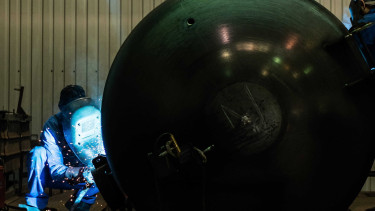COVID-19: Hospitalisation statistics both worsen and improve in Hungary

For the first time we complemented our usual table comparing the weekly changes of key 7-day average data with a chart that shows the evolution of said changes from the start of the year both in 2022 and in 2021.

As you can see on the chart below, the two pandemic waves are extremely different when we compare the daily week-on-week changes in the number of Covid patients in hospital and on ventilator. The ever higher rate at which hospitalisations rise from one week to another has been coupled with a diminishing improvement in ventilation numbers since 28 January.
The slackening decrease in the number of ventilated Covid patients started a few days earlier in 2021 than this year, but the weekly change in the number of hospitalised coronavirus patients never showed an increase even though the drop did start to moderate on 26 January 2021.

There is a silver lining, though. Actually, there's more than one.
Firstly, the day-on-day change of the 7-day average of the number of hospitalised Covid patients has dropped (see orange line on the graph below). For now we should not read too much into this, but it is definitely a good sign. Secondly, studies keep coming up with the same result: the Omicron variant of coronavirus generally (!) causes less severe disease than Delta. (They also stress that vaccination remains crucial to prevent not only infection, but also hospitalisation and death.)
There are signs, though, that suggest the worst is not over. Such as the blue line on the graph below.
On the two charts below the 0% line is important. When the curves are under 0% there’s a decline, when they go over 0% it’s an increase.
More importantly, when a value is north of 0% but the curve descends, it means an increase at a slowing rate, rather than a decrease. If the curve is above 0% and ascending, it is an increase at an accelerating rate. When we are under 0% and the curve goes lower, it translates into an accelerating decrease, and when it goes up it marks a decelerating decrease.
The left-hand chart shows what happened a year ago. The time series spans between 1 Nov 2020 and 28 Feb 2021, and the same dates in 2021 and 2022 are indicated by the red ovals. The black oval shows when the turnaround this year occurred.
What the curves tell us is that (based on 7-day averages), the decline in the number of active cases continues at a diminishing rate, while the number of hospitalisations is rising at an accelerating rate (see silver lining remark above), and the number of Covid patients on ventilator has been improving to an ever smaller extent. Actually, the improvement has not just halted, but there appears to be an accelerating rise in the number of Covid patients needing mechanical ventilation.
In view of the scientific findings that Omicron appears to be less severe than Delta, we are anxious to see where this is headed. Needless to say, we need data for a couple of days more to determine that, but for now things are not looking up. Let's hope that the small downturn in the orange curve is the beginning of a descent, in which case the blue line should also reverse at some point. Also note that any decline (or rise) in the number of new cases is tracked with weeks of delay in hospitalisation, ventilation and death numbers.

The downturn at the top of the green curve on the left-hand chart below is promising, though, but it will take some time before hospitalisation, ventilation, and death figures start reflecting what possibly is the peak or imminent peak in the number of new COVID-19 cases.



As regards the number of ventilated patients per those in hospital, the 7-day average has been dropping since end-December (13.5%) and is currently as low as 5.5%.

Highlights of of today's data release:
- new cases -10% d/d, -7% w/w;
- 7-day average of new cases -1.2% d/d, +4.7% w/w;
- Covid patients in hospital +110 (+2.5%) d/d, +1,184 (+36%) w/w;
- Covid patients on ventilator 0% d/d, +3.8% w/w;
- Covid deaths +11 (+12.5%) d/d, +24 (+37.5%) w/w;
- Positivity rates keep going up.

The key indicators on the graph below are the 7-d / 28-day average and its 7-day average, for two periods: starting from 1 October 2021 and starting from 1 September 2020. Having dropped further, both are back at their early January / mid-November level.


Cover photo: Getty Images








